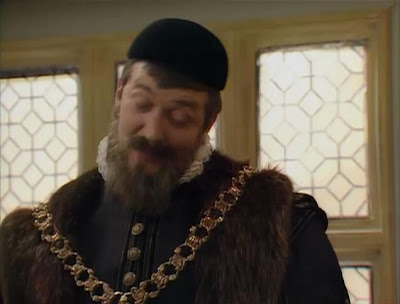pg. 56
"I know it was a big seven-passenger touring car...red wire wheels."

A touring car was a popular car body style in the early 20th century, being a larger alternative to the runabout and the roadster. They were open cars, often fitted with convertible tops. Most early touring cars had a tonneau at the rear giving seating for four or more. Engines on early models were either in the front, or in a mid-body position. Touring cars evolved into the modern sedan/saloon body style. They are defined as being an open car seating five or more,[1] however the term has been more loosely used in racing.
By the mid-teens in the United States, the touring car body had evolved into a variety of types, with the four door touring car, equipped with a convertible top, being the most popular body style offered.
The majority of Model T's produced by Ford between 1908 and 1927 were four and then three-door models (with drivers sliding behind the wheel from passenger seat) touring cars, accounting for 6,519,643 cars sold out of the 15,000,000 estimated Model T's built. In terms of percentage, the 5-passenger touring car model was Ford's most popular body type and accounted for 44% of all Model T's (cars, trucks and chassis) sold over the model's eighteen-plus year life span; Ford's second most popular body style during the same period was its Model T based truck.
Side curtains, when available for a particular model, could be installed to protect passengers from wind and weather by snapping or zipping them into place; otherwise, drivers and passengers braved the elements. When the top was folded down, it formed a bulky mass known as the "fan" behind the back seat: "fan covers" were made to protect the top and its wooden ribs while in the down position.
The popularity of the touring car began to wane in the early 1920s when cars with enclosed passenger compartments became more affordable, and began to consistently out-sell the open cars.
"Know that rowboat of Bill's, that Cape Cod dory he had built last year up to Wareham?"
The dory is a small, shallow-draft boat, about 5 to 7 metres/16.4 to 23.0 feet long. It is a lightweight and versatile boat with high sides, a flat bottom and sharp bows. They are easy to build because of their simple lines. For centuries, dories have been used as traditional fishing boats, both in coastal waters and in the open sea.
"You can have it for ten, though. F. O. B. our wharf."
FOB is an initialism which pertains to the shipping of goods. Depending on specific usage, it may stand for "Free On Board" or "Freight On Board". FOB specifies which party (buyer or seller) pays for which shipment and loading costs, and/or where responsibility for the goods is transferred. The last distinction is important for determining liability for goods lost or damaged in transit from the seller to the buyer.
So Asey is telling the man he's talking to that that guy will have to pick up the dory at the Porter wharf (Porter being the man Asey works for).
"That is just where the shoe pinches."
Shoeshine is from 1911. Shoelace is attested from 1640s. Shoestring is from 1610s; as figurative for "a small amount" it is recorded from 1882; as a type of necktie, from 1903. Shoebox is attested from 1860; as a type of building, from 1968. To stand in someone's shoes "see things from his or her point of view" is attested from 1767. Old shoe as a type of something worthless is attested from late 14c. Shoes tied to the fender of a newlywed couple's car preserves the old custom (mentioned from 1540s) of throwing an old shoe at or after someone to wish them luck. Perhaps the association is with dirtiness, on the "muck is luck" theory.
The earliest designs were simple affairs, often mere "foot bags" of leather to protect the feet from rocks, debris, and cold. Since shoes use more leather than sandals, their use was more common in cold climates. By the Middle Ages, turn-shoes had been developed with toggled flaps or drawstrings to tighten the leather around the foot for a better fit. As Europe gained in wealth and power, fancy shoes became status symbols. Toes became long and pointed, often to ridiculous proportions. Artisans created unique footwear for rich patrons, and new styles developed. Eventually the modern shoe, with a sewn-on sole, was devised. Since the 17th century, most leather shoes have used a sewn-on sole. This remains the standard for finer-quality dress shoes today. Until around 1800, shoes were made without differentiation for the left or right foot. Such shoes are now referred to as "straights".















































